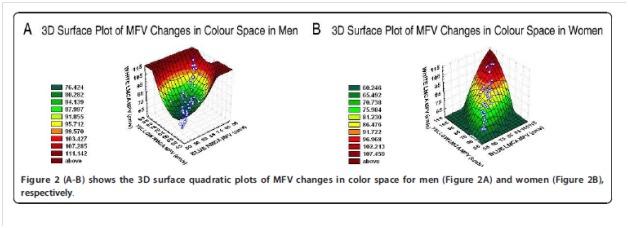A neuroscientist of repute, Academician Prof (Dr) Philip Njemanze says men and women see colours differently.
Njemanze of the International Academy Of Astronautics, IAA, the highest UNESCO Body for Space Research, wrote:
“I have been fascinated with the enormous capacity of human color vision. Just imagine the photons of light are processed by 126 million light-sensitive cells in your eyes. With your usual three main cone receptors you can distinguish around 1 million colors.
“However, some rare people particularly women with four cone receptors called tetrachromats can distinguish 100 million colors. This is of interest to us at our Neurocybernetic laboratory here at Chidicon, where we study Brain Control systems for applications in Disease and Artificial Intelligence (AI). Our interest is to understand how the brain integrates the basic characteristics of color vision comprising hue, saturation and brightness. Hue is the dominant wavelength classified as red, yellow, green, blue or intermediate color. Saturation is the amount of white light mixed with hue. Brightness refers to intensity or shading mixed with the hue.

“The physical characteristics could be displayed in the familiar 3D-Color space. However, how the brain processes the colors has not been fully elucidated. We hypothesized that, the brain functionally integrates within a three-dimensional physiologic ‘color space’, luminance effect in the left hemisphere with wavelength-differencing activity in the right hemisphere in men, but with frequency-differencing activity in the left hemisphere in women.
“This functional integration in color space could be mathematically modeled and could have potential applications in the study of color memory, adaptive neuroplasticity in stroke management/rehabilitation, neurodegenerative diseases (such as Alzheimer) and artificial intelligence. The details of this first in literature ground-breaking study was described in [Njemanze, P.C. Gender-related differences in physiologic color space: a functional transcranial Doppler (f TCD) study. Exp & Trans Stroke Med 3, 1 (2011). https://doi.org/10.1186/2040-7378-3-1 ] https://etsmjournal.biomedcentral.com/track/pdf/10.1186/2040-7378-3-1.pdf Our hypothesis was confirmed and underscored that men and women do not see the world in colors in the same light in the brain!
Academician Dr Philip Njemanze MD Hons, is a neuroscientist of the International Academy of Astronautics , IAA, the highest UNESCO Body For Space Research








